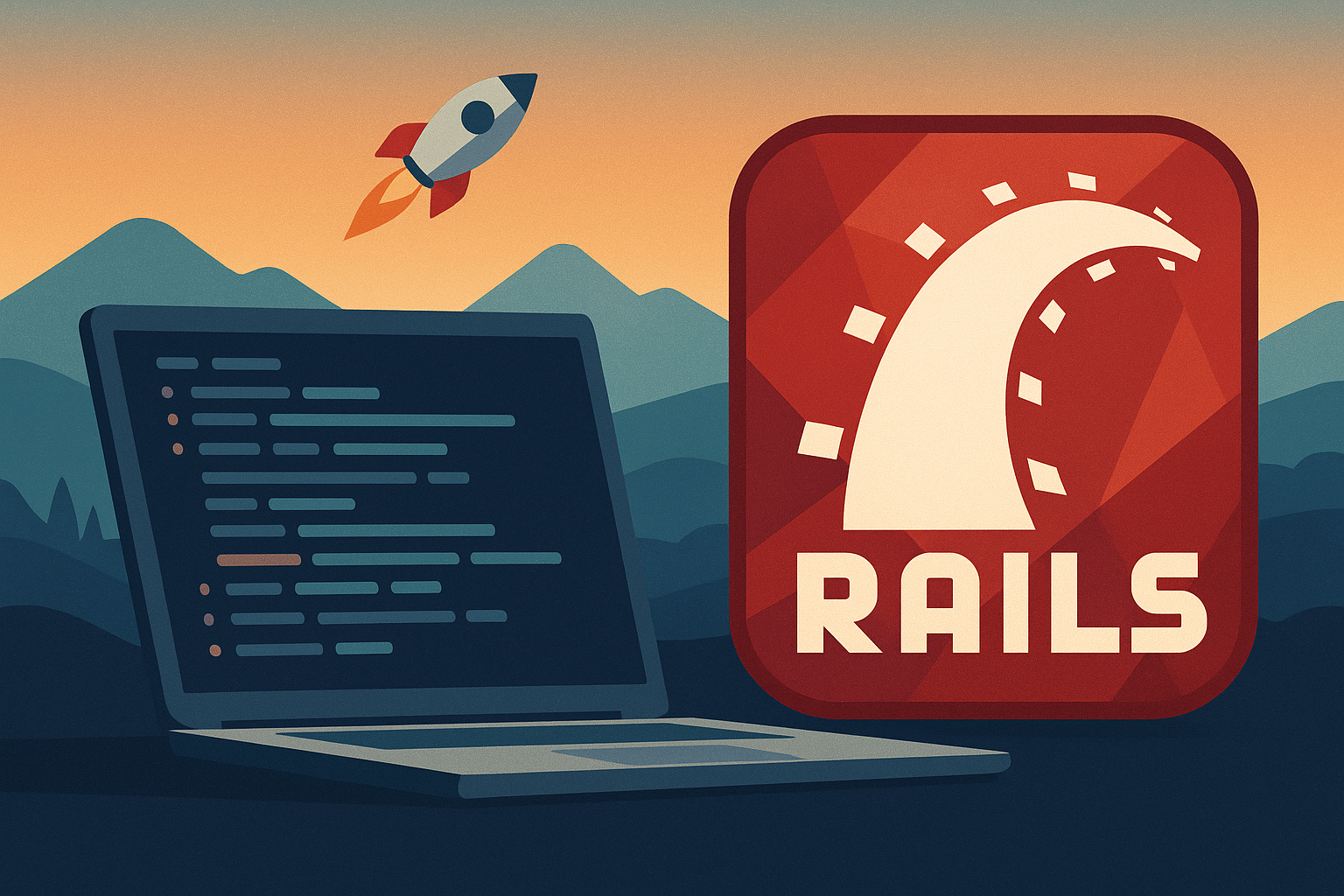The state of Rails and the rise of vibe coding
Rails turned 20, and we almost missed the AI party. Here's how we moved from handcrafted code to LLM-assisted development — and why vibe coding fits surprisingly well into our Rails mindset.

Rails turned 20 recently, but it’s far from fading out. In 2024–2025, the Rails community is seeing a renaissance: new conferences like Rails World, growing contributions through the Rails Foundation, and renewed interest in the developer experience. While it no longer dominates headlines, Rails remains a robust and productive choice for web agencies and startups alike [1].
We’re big Rails advocates and have been for nearly two decades. We built our careers around Ruby and Rails and the love for good software. We helped scale some of the most complex Rails monoliths in Eastern Europe at places like Skroutz.gr and Workable, contributed to open source, organized Euruko 2013 in Athens, and led teams at companies like Twitter and Elastic. Today, we run HOW Studio, a small, independent agency where we still do all the coding ourselves.
Rails in 2025: boring, beautiful, and more powerful than ever
Rails is now “boring and beautiful”, battle-tested, fast to build with, and packed with modern features like Turbo and Hotwire. The job market is shifting: senior devs are in demand (especially for legacy apps), but junior roles are tougher to land [2].
Despite the noise, new Rails apps are still being launched, especially by product-focused teams who value developer speed. In fact, over half of Rails developers recently surveyed said they’re working on greenfield apps, not just maintaining legacy ones [3].
What is vibe coding?
A new era of development is emerging: vibe coding. With tools like Cursor, Claude, and GPT-4, Rails developers are coding through natural-language prompting. You describe the intent, and the AI builds scaffolds, controllers, even test suites.
Think
rails generate, but on steroids.
It’s especially powerful for prototyping, debugging, or offloading boilerplate. One example from Eagerworks demonstrated building a Slack-style messaging app in Rails entirely by prompting Cursor’s agent mode [4].
How we do it at HOW Studio
At HOW Studio, we were hesitant at first. We like handcrafted things. We like to get our hands dirty, understand the tradeoffs, shape each abstraction ourselves. But we also like staying in touch with the current tech — and vibe coding kept showing up in real workflows.
Eventually, curiosity won.
We’ve now fully embraced the shift. We regularly build features and entire MVPs using a mix of Claude Code, GPT-4, and Cursor. Whether it’s scaffolding models, rewriting legacy services, or iterating on UI components, vibe coding has become a core part of our Rails workflow. It’s not just a productivity boost — it’s helped us ship better software, faster.
The limits (and strengths) of AI-assisted development
That said, it’s not a shortcut to clean architecture. As Rails projects grow, LLMs often struggle to make the right architectural choices without human guidance. We treat AI like a junior developer: great at churning out code, but not always aware of context or conventions. Code review, strong tests, and clear design principles still matter [5].
Interestingly, Rails’ convention-over-configuration philosophy makes it especially well-suited for AI-augmented workflows. With predictable folder structures, naming, and idioms, tools like Claude and GPT can reason about your code more effectively. Cursor’s project-aware tooling even lets you feed custom context and rules so your AI assistant follows your house style [6].
Rails isn’t dead. It’s quietly thriving. And with vibe coding, it might just become the most enjoyable way to build apps in 2025.
References
- Rails Foundation Annual Report 2023
- Reddit - r/rails: “Is Rails dying or just evolving?” discussion
- Planet Argon – 2024 Rails Community Survey Results
- Eagerworks – “Vibe Coding: How LLMs Are Reshaping the Way We Build Software”
- David Klassen – “My ‘Vibe Coding’ Experience”
- Cursor Blog – Introducing Cursor Agent
If you’re looking for a traditional web agency, that’s not us. But if you want to collaborate with a team that’s passionate about creativity, fun, and experimentation, then reach out. Let’s build something great together.